Root bridges of Cherrapunji, Meghalaya, India
To cross the rivers and streams of the Cherrapunji forest in Meghalaya state, north-east India, put your trust in a tree. There are no standard walkways to be found: instead, the tangled, twisting aerial roots of the rubber trees on the banks stretch across the water, forming a living, ever-growing bridge to the other side. These organic bridges are the result of a little human guidance and a lot of patience. Members of the local Khasi tribe control their growth by laying lengths of bamboo or betel nut tree across the water as a guide, then waiting for the roots of the rubber trees to follow along. As the roots grow, the Khasi add handrails made of vines and fill in gaps with mud and stones, creating a solid pathway. It takes up to 20 years for a bridge to become sturdy enough to cross.
Merry Cemetery, Săpânța, Romania
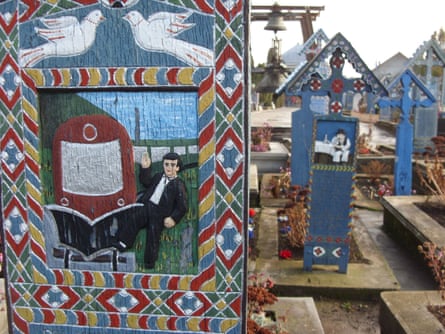
At the Cimitirul Vesel (Merry cemetery) over 600 colourful wooden crosses bear the life stories, dirty details and final moments of the bodies that lie below. Illustrated crosses depict Săpânța’s soldiers being beheaded and a townsperson being hit by a truck. The epigraphs are frank and often funny: “Underneath this heavy cross lies my mother-in-law … Try not to wake her up. For if she comes back home, she’ll bite my head off.” The cemetery’s style was created during the 1930s by Stan Ioan Pătraş, who began carving clever and ironic poems about the deceased and painting their portraits on the crosses. Pătraş died in 1977, having carved his own cross and left his house and business to his most talented apprentice, Dumitru Pop. Despite the darkly comic – or merely dark – tones of the crosses, Pop says no one has ever complained about the work.
Star City, Moscow Oblast, Russia

During the development of the Soviet space programme, a secret air force facility in the woods north-east of Moscow transformed into a settlement called Star City. The area centred on the Yuri Gagarin Cosmonaut Training Center, where prospective cosmonauts would undergo physical, technical, and psychological preparation for space flight. Following the dissolution of the USSR in 1991, the curtain of secrecy was lifted, and the centre opened its doors to the public. Today, a handful of companies offer tours of the facility, during which visitors can wear a mock spacesuit, take a ride in the centrifuge, or board a zero-gravity flight that simulates weightlessness through a parabolic trajectory. A museum of space travel and exploration contains an impressive collection of vintage spacesuits and capsules charred from re-entering the atmosphere.
gctc.su, starcity-tours.com
Fingal’s Cave, Scotland
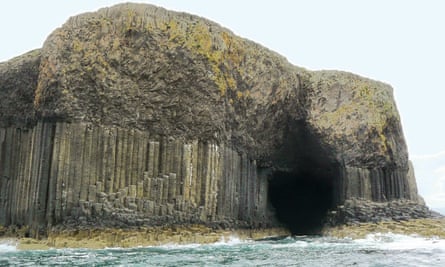
Like something out of a fantasy novel, Fingal’s Cave in Scotland’s Inner Hebrides is a huge (82 x 22 metre) sea cavern with walls of hexagonal basalt columns. Celtic legend holds that the cave was once part of a bridge across the sea, built by giants to fight one another. Science says it was formed by masses of lava that cooled so slowly it broke into long hexagonal pillars, like mud cracking under the hot sun. When naturalist Sir Joseph Banks rediscovered the cave in 1772, it captured people’s imagination and inspired the work of artists, writers, and musicians. Composer Felix Mendelssohn wrote an overture about the cave in 1830, the same year painter JMW Turner depicted it on canvas. Thus was born a Romantic-era tourist site that is just as entrancing today.
Underground Temples of Damanhur, Italy
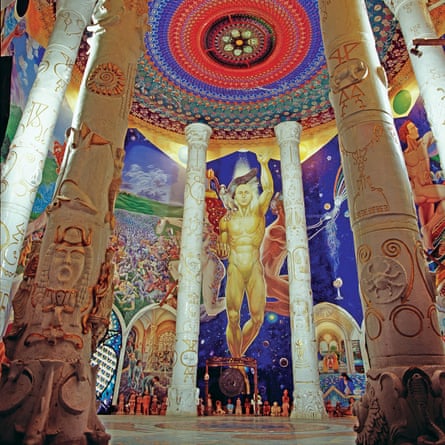
Beneath the mountain commune base for Damanhur, an eco-society established in the 1970s, are five levels of subterranean temples decked out in startling new age splendour. Damanhur, 30 miles north of Turin, is based on neo-pagan and new-age beliefs with emphasis on creative expression, meditation, and spiritual healing. From 1978 to 1992, its citizens worked around the clock in shifts to excavate 8,500 cubic metres of earth. Each hall, and hallway, was decorated in a different theme, with murals, stained glass windows, mirrors, and mosaics. The 70s-style artwork depicts many things, from the history of the universe to a forest of endangered animals to the International Space Station. The perimeter of one of the circular rooms is cluttered with sculptures, due to the directive that each member of the community must carve a statue in their own likeness.
Firefly squids in Toyama Bay, Japan

The firefly squid is a cephalopod that glows brilliant blue and usually lives in the deep, dark waters surrounding Japan. But every year, from March to May, millions surface in Toyama Bay to spawn. This time of year is also prime fishing season. Nets trawl the pre-dawn waters, hauling up piles of squirming, glowing creatures and turning boats into beacons. The beaches are bathed in a blue glow as the adult squid – who have a one-year lifespan – lay their eggs and prepare to die. The Japanese government regards the annual show as a “special natural monument”. While the firefly squid are highly regarded for their magical visual effects, they are also prized for their tasty innards. After basking in the glow of the bioluminescent bay, go to a sushi joint and feast on squid served raw, boiled, or turned into tempura.
Kane Kwei carpentry workshop, Accra, Ghana

A Ghanaian teacher was once buried in a ballpoint pen, a singer was laid to rest inside a microphone, and a labourer was interred in a hammer. These “fantasy coffins,” built in the shape of items representing the deceased’s occupation, passions, or aspirations, were made by craftsmen at Kane Kwei carpentry workshop. The studio was established in the 1950s by Seth Kane Kwei, a member of the Ga ethnic group of coastal Ghana. The Ga believe that when someone dies, they move on to another life, and continue to exert influence on their living ancestors. Family members therefore make sure to honour the deceased and secure their from-the-grave goodwill by staging elaborate funerals involving hundreds of guests and a procession.
ghanacoffin.com
Paronella park, Queensland, Australia
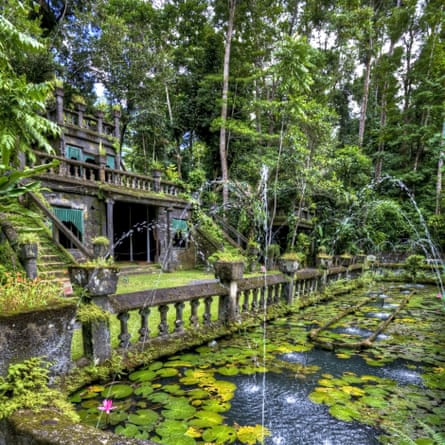
Since childhood, baker José Paronella had dreamed of building a Moorish castle. In 1913, the adventurous then 26-year-old left his village in Catalonia and moved to tropical northern Australia. There, he eventually found wealth as a sugar cane farmer, and was able to pursue his dream. In 1929, Paronella purchased a plot of rainforest in Queensland and began building his castle by hand, using sand, clay, old train tracks, gravel from the nearby creek, and wood taken from abandoned houses. By 1935, the structure had expanded to include a pool, cafe, cinema and ballroom, as well as tennis courts and villa gardens with a grand staircase – all open to the public. After Paronella’s death in 1948, the building suffered decades of neglect, but conservation efforts mean the castle is alive again. Lush tropical plants have encroached upon and mingled with Paronella’s hand-built stairs and fountains, making them look like they sprouted from their natural surroundings.
paronellapark.com.au
Great Stalacpipe Organ, Luray, Virginia, US

Deep in the limestone Luray caverns is an unusual musical instrument designed by a tinkerer named Leland W Sprinkle. With its four-keyboard console, it looks like a standard variety church organ, but there’s a crucial difference: there are no pipes. Instead, the “pipes” are stalactites and the instrument is a lithophone – a device that produces music by striking rocks of differing tones. Sprinkle, a mathematician and electronics scientist at the Pentagon, came up with the idea for the “Stalacpipe Organ” after touring the caverns in 1954. He spent three years searching for stalactites that corresponded to the required musical notes, sanding them down to be pitch-perfect, and running five miles of wires between the console and the rubber mallets that would strike each stalactite. When the organ was first installed, Sprinkle himself took to the keys to entertain visitors. These days the organ entertains cave visitors with automated renditions of such classics as Moonlight Sonata.
luraycaverns.com
Everlasting lightning storm, Catatumbo, Venezuela

There’s something strange in the air where the Catatumbo river flows into Lake Maracaibo. For 260 nights of the year, often for up to 10 hours at a time, the sky above the river is pierced by lightning, producing as many as 280 strikes per hour. Known as the relampago del Catatumbo (the Catatumbo lightning), this everlasting lightning storm has been raging for as long as people can remember. The lightning, visible from 25 miles away, is so regular that it’s been used as a navigation aid by ships and is known among sailors as the Maracaibo Beacon. Recent scientific studies have determined that the concentrated lightning is likely caused by an air current that sweeps moisture from the Caribbean Sea and drives it up above the lake. Climate research scientists are currently using Catatumbo as a testing ground to trial a lightning forecast system.
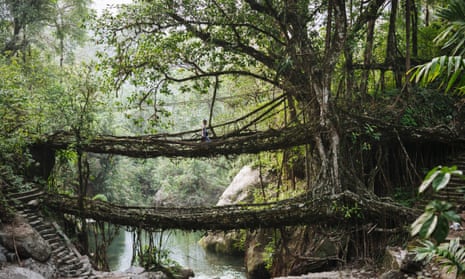
Comments (…)
Sign in or create your Guardian account to join the discussion